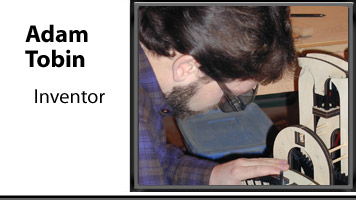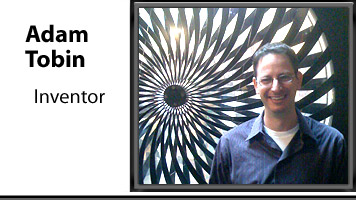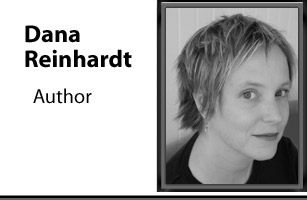he said, shadows
dancing over their heads
like bones,
throwing another
pile of metal in the fireplace
to use later as
warmers,
pressing refresh
on the numbers page
of his mobile device,
“if you listen closely
you can literally
hear
the economy
slowing down.”
 Cecil Vortex
Cecil Vortex
His hair
dirty gray, piled high like
handfuls of baby sheep
stacked and teetering.
the air
sharp with cotton candy
drift
that leaps toward
the understanding part.
you can’t hold it back.
a pillow
he’s reaching for it now
to prop up all
those teetering stacks,
to ease his way into
a dream of sharp fluff.
An Interview with the Exploratorium’s Adam Tobin, Part Two

In which Tobin talks about mechanical art and what makes for a great toy, and shares ruminations from a Muppet colloquium.
Welcome to the second part of this interview with toy inventor/Director of Exhibit Development Adam Tobin. If you haven’t already, be sure to also check out Part One.
On the Web: The Exploratorium; Wordle preview
Cecil Vortex: I read that you also create mechanical art. What’s that work like?
Adam Tobin: After I sold the first toy company, I had a few larger-scale projects I’d always wanted to pursue. The first thing I wanted to make was a clock that told time with rolling marbles. I’d wanted to make it since I was a kid. And I started making it and ended up making a few other contraption-type pieces. It was just such a joy for me, after years of designing things to be mass produced to say, “I’m just going to make one, and I’m not as concerned about how you can make 10,000 of these.” In essence, they were very large one-of-a-kind toys.
CV: Do you still work on those projects?
An Interview with the Exploratorium’s Adam Tobin, Part One

In which Tobin talks about growing up as a child-inventor, the Exploratorium workflow, and the challenges of summoning an “ah-ha!” moment on a deadline.
Bio: Adam Tobin is the Director of Exhibit Development at San Francisco’s famed Exploratorium. Before that he was an entrepreneur and an award-winning toy inventor whose creations included Frigits, Getups, Tub Tunes Water Flutes and Drums, and SuperFort. His creations are sold around the world and have been featured in New York Magazine, Discover Magazine, CBS Morning News, Fox News, CNN, Regis and Kelly Ripa, and the New York Times.
This is the first half of a two-part interview. Jump here for the second half.
On the Web: The Exploratorium; Wordle preview
Cecil Vortex: Do you remember your first invention?
Adam Tobin: I started as an electronics tinkerer. I made a burglar alarm to keep my sister out of my room. I took an old car radio that had been abandoned from one of the old family cars and got inside it and wired up quadraphonic sound in my bedroom. I began making wooden toys when I was young as well, like whirligig and rolling marble toys.
CV: Were you raised in a family of inventors, or was it something you got into on your own?
AT: I don’t know where it came from. My father can’t pick up a hammer…. For some reason, with me, I was just a tinkerer from the get-go.
CV: How did your parents respond?
Virtual LP: Time After Time
I’ve fallen back in love with the piano. In particular, I can’t stop playing one of my very favorite songs — “Time After Time” by the unbeatable Cahn and Styne. Holy cow could those fellows write a tune. There are incredible versions of this out there by the likes of Sinatra and Chet Baker. A personal favorite is by Alex Chilton, off Cliches (highly recommended).
I took a crack at recording a cover of this beautiful song this evening. As with pretty much all the tracks on the Virtual LP, this is a relatively short number — a smidge over 60 seconds. Just piano and vocals. I even resisted my usual urge to overtreat the voice. A fun Sunday night project. The house was warm, the way houses get when it’s snowing outside. Only, no snow…. Hope you enjoy it, and thanks for listening,
-Cecil
time: 1:06 seconds; specs: 1.6M
Press Play to play.
1987
In Times Square, it’s
twenty minutes
past midnight,
there’s a broken champagne
bottle at our feet,
slipped loose
from a pal’s
whoops.
Garbage floats by like kids
in a Halloween parade. Cops
clip-clop past on horseback, keeping
elevated sight lines secure.
And that’s about it.
The crowd’s gone.
Seeped through grating
down to the rumble.
Cold streets left to
we scattered few
post-apocalyptic
topsiders.
Too
He ate
too many oysters
there’s a barbecued
pearl
forming
somewhere.
Forget not the mud
Forget not the mud caked juice box,
those traces of familiar sweetness locked in
hannukah gelt coin coverings dented
dirtward
next to
a plate or two of shaded eggplant parmigiana.
There was a party here. There were frightened
earthworms. Thunder. Gray light. And children being
irresponsible.
if “the last thing
if “the last thing
I want
to do
is
upset you”
does
that mean
“I want to
upset you,
after
I’m done with
all my other
projects?”
An Interview with Dana Reinhardt

Photo credit: Chelsea Hadley.
In which Reinhardt talks about why she rarely uses her notebook, how her first book may have been the easiest to write, and getting a sixteen-year-old to translate into IM.
Dana Reinhardt is the author of three novels for young adults. Her most recent book, How to Build a House (Random/Lamb, 2008), tells the story of a resilient teen who leaves her split family and life on the coast for a summer in Tennessee. Reinhardt’s pre-novel-writing experience includes working in the foster care system, fact-checking for a movie magazine, working for PBS’ Frontline, and time spent as a reader for a young adult line at a mass-market paperback house.
We chatted by phone eons ago (she’s very patient). I read through the conversation last month while simultaneously attempting to tackle a novel during NaNoWriMo, and her words rang so true — there’s great advice here for artists of all stripes, and especially for writers.
Dana Reinhardt on the web: danareinhardt.net
Cecil Vortex: Do you have a writing routine you hold to?
Dana Reinhardt: I do. I try my best to stick to writing every workday. It’s a bonus if I do any writing on a weekend. I try to write Monday through Friday as if I had a real job. My goal for each day can change but in general, my rule is that my workday’s not done until I have three pages, which is roughly 1,000 words, maybe a little less. So it’s somewhere in there. I generally don’t let myself off the hook until I’ve done that. And sometimes I can do that in 40 minutes, and sometimes it takes me ten hours. But I try to have that done every single day.
CV: Is there an outline you work off?
DR: I don’t work with outlines. I know a lot of people do, but I don’t. I mean, I know where I’m headed, usually. Before each book so far that I’ve written, I know generally the arc of the story and how I want it to end. And sometimes I’ll have certain things I have an idea that I want to have happen halfway through. But in general, for me, the fun about writing is finding out what happens between the beginning and the end of the story.
CV: Do you try to get a first draft out and then go back and revise? Or do you tend to polish as you go?